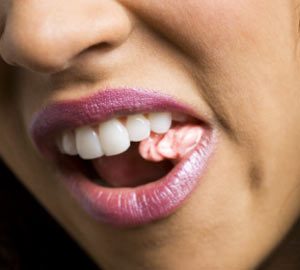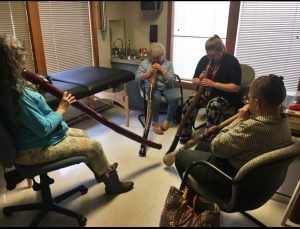Slurred speech, also known as dysarthria, is a condition that results from impaired movement of the muscles used for speech production, including the lips, tongue, vocal folds, and/or diaphragm. Common causes of dysarthria include such neurological disorders as a stroke, Parkinson, brain injury, tumor and conditions that cause facial paralysis (eg. Bells Palsy).
When the muscles controlling the face are affected, symptoms may include slurring, speech that is too fast or slow, speaking softly, and impaired pitch and rhythm. Drooling may be present as well as decreased mouth movements.
Sometimes therapy can treat the underlying cause of the condition. With Bell’s palsy, for example, treatment often includes a steroid and/or antiviral medication. Patients with slurred speech due to a stroke may be given a series of exercises to maintain muscle strength and flexibility while the nervous system mends. Therapy may focus on such strategies as slowing rate, improving breath support. For more information, see http://www.asha.org/public/speech/disorders/dysarthria/
At Southwest Rehabilitation, we use several unorthodox treatments. The first is gum chewing. This engages all of the facial muscles including the tongue, lips and jaw. In addition, it involves the respiratory and swallowing muscles. One of the exercises in called “lateralizing.” Gum is moved from the left side of the mouth to the right side and visa versa using a tongue sweep https://youtu.be/7QNgZsPGFOY
The next gum exercise is tucking the gum as if blowing a bubble. This exercises the tip of the tongue and engages the lips and jaw. https://youtu.be/74w5375QYvc
Rolling the gum on the roof of the mouth is one of the most difficult of gum exercises as it requires tongue tip precision and strength as well as coordination of the mandible https://youtu.be/UeJIT9M0SUE
A new gum chewing exercises was recently added given research showing that base of tongue exercises were shown to reduce residuals in the pharynx post swallow. This exercise requires the patient to roll the gum into a ball, move the gum to the mid portion of the tongue and press it to the roof of the mouth and then remove using the tongue tip. https://youtu.be/YX0oD81NYOs
Another treatment technique involves playing the didgeridoo. For the stroke patient that his limited mobility and upper and lower extremity weakness, playing the didgeridoo is the perfect exercise! Having to secure a seal against the opening of the didgeridoo requires oral motor strength and endurance and sustained blowing taxes the respiratory system without having to get up.
technique involves playing the didgeridoo. For the stroke patient that his limited mobility and upper and lower extremity weakness, playing the didgeridoo is the perfect exercise! Having to secure a seal against the opening of the didgeridoo requires oral motor strength and endurance and sustained blowing taxes the respiratory system without having to get up.
Southwest rehabilitation has a Didgeridoo Club free to the public. Log onto our website News/Updates for the next Club meeting https://southwestrehabilitation.com
